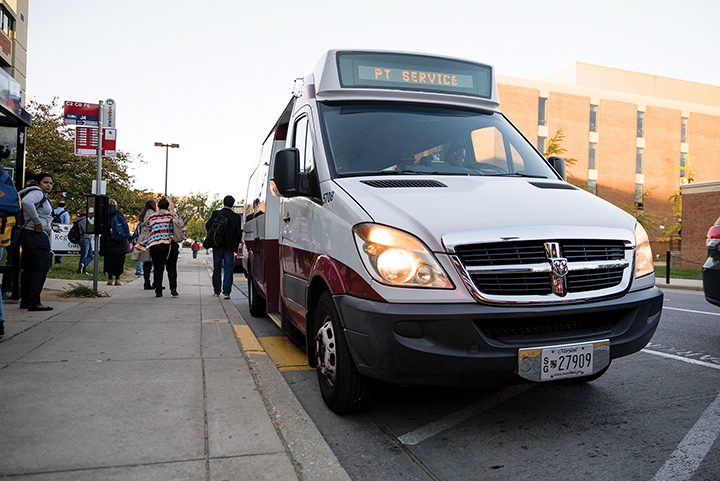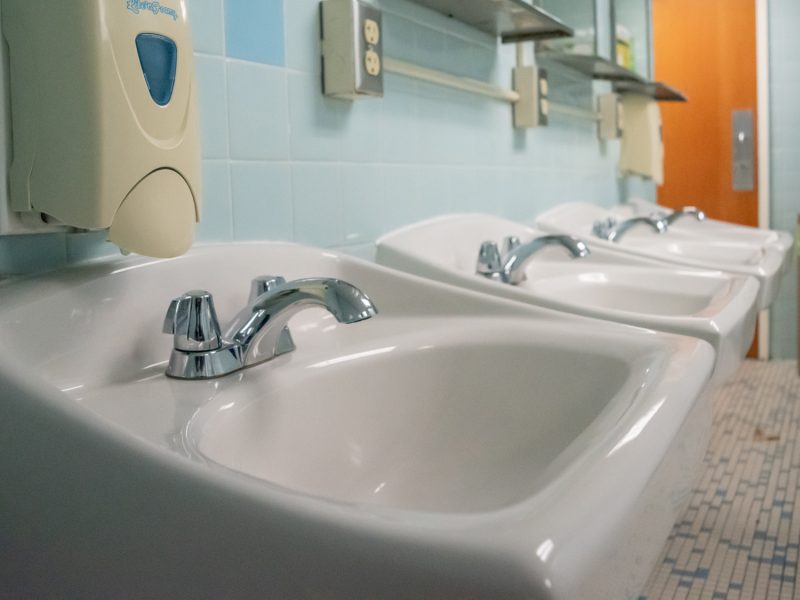Students walking around the University of Maryland campus may start to see more Paratransit buses by spring semester, DOTS Assistant Director Valerie Goubeau said.
The buses, which offer free transport to students with temporary or permanent disabilities, have been experiencing a steady increase in ridership since fiscal 2013, when more than 6,000 students utilized the service. Based on the fiscal 2016 annual report, that number has risen to more than 9,000.
“Although we have very active Paratransit use, during peak times there are occasions where we are not able to meet the demand for what we know students and other members of the community actually need,” Goubeau said, noting that peak times are often midday and weekdays.
In response to the demand, the Department of Transportation Services applied for state funds about a year ago, Goubeau said, and the $383,847 in additional funding was just recently approved in September. On top of the five buses available currently — each can fit about 15 to 20 passengers — Goubeau said she expects three additional buses to be operating on campus by January, increasing the number of potential trips by 60 percent, according to the fiscal 2016 report.
“The [transportation] needs go up and down every year, but our resources stayed the same, so for the years when the need went up, people are not able to … get to places on campus when and where they want to get to them,” said DOTS Director David Allen. “We believe if we have more resources to go toward this, then we can meet those peaks when they come.”
Jamie Kerner, a freshman journalism major, said she noticed Paratransit’s tight resources when she used the service earlier this semester after tearing ligaments in her foot.
“Towards the end of my using it, it got more crowded and it was harder to book the Paratransit on time,” she said. “But besides that, it was a great program and it really helped me out.”
Junior cell biology and molecular genetics major Aria Jalalian echoed Kerner’s sentiments. He was on crutches earlier this semester, so he used the Paratransit service on a regular basis.
“If I wanted to do something on a specific day and I scheduled it that day, sometimes I didn’t get the times I wanted because the shuttle was booked,” he said. “But I basically had to schedule in advance, and advance was like a day in advance so it really wasn’t a big deal.”
Despite those occasional inconveniences, both Kerner and Jalalian emphasized that they really appreciated the service Paratransit provides.
Goubeau said although Paratransit may not always meet the high demand of the rush hour, the people who run the program will even go as far as taking trip requests over the phone in special circumstances.
“We have a good amount of flexibility, understanding that usually there is a lot more demand during peak times — during the day time — to where we want to do everything we can to fit people in,” she said.
Jo Ann Hutchinson, director of the Accessibility and Disability Services, formerly known as Disability Support Services, oversees the process of approving students who have disabilities with the Paratransit program. She said the partnership between ADS and DOTS has existed for as long as she has worked here — at least 12 years.
“I’m so happy that the grant was awarded and they are able to add more shuttles, but I still think the students who are registered through Disability Support Services have had pretty good success using the system.”
Students can book Paratransit appointments through the DOTS website.



